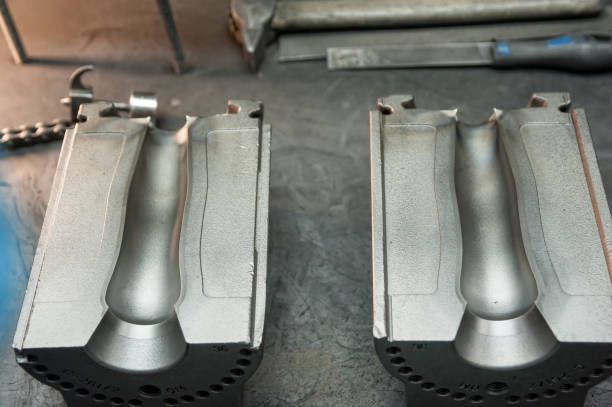Unlock your product's potential with our One-stop solutions!
+86-755-83222882

GET QUOTE
How Many Types of Injection Molding Are There?
Injection molding is a versatile and dynamic manufacturing process that has revolutionized the production of plastic components. Whether you’re an engineer, a product designer, or simply curious about the intricacies of manufacturing, understanding the different types of injection molding can open up new avenues for creativity and efficiency. In this article, we will delve into the various types of injection molding, exploring their unique applications and innovations within this essential industry.
What is Injection Molding?
Before diving into the types of injection molding, it’s crucial to understand the basics. Injection molding involves injecting molten plastic into a mold cavity, where it cools and solidifies into the desired shape. This process is widely used due to its ability to produce complex shapes with high precision and repeatability. Injection molding is the backbone of industries ranging from automotive to consumer electronics, and it’s the reason we have many of the plastic products we use daily.
Types of Injection Molding
Injection molding encompasses several distinct techniques, each with unique benefits and applications. Here, we’ll explore the most prominent types:
Thermoplastic Injection Molding
Thermoplastic injection molding is the most common form, utilizing thermoplastic polymers. These materials become pliable or moldable above a specific temperature and solidify upon cooling. This type is ideal for producing a wide range of products, from everyday household items to automotive components. The process is efficient, allowing for the recycling of scrap material, which can be melted and reused.
Thermoplastic injection molding's versatility makes it a popular choice across industries. Common thermoplastics used include polyethylene (PE), polypropylene (PP), and polystyrene (PS). The ability to recycle materials reduces waste and cost, making it an environmentally friendly option.
Thermoset Injection Molding
In contrast to thermoplastics, thermosetting polymers are used in thermoset injection molding. These materials irreversibly cure and harden when heated, making them suitable for high-heat applications. Products made from thermoset plastics, such as electrical insulators and kitchenware, exhibit superior strength and resistance to heat. However, once molded, these materials cannot be re-melted or re-shaped.
Thermoset injection molding is ideal for parts that must withstand high temperatures and mechanical stress. Common materials include epoxy, phenolic, and melamine. Despite the inability to recycle thermoset materials, their durability and stability make them indispensable in critical applications.
Liquid Silicone Rubber (LSR) Injection Molding
Liquid Silicone Rubber injection molding is a specialized process for producing flexible, durable, and heat-resistant products. LSR is injected into a heated mold, where it cures and takes shape. This method is widely used in the medical, automotive, and consumer goods industries. Items such as medical devices, baby products, and kitchen utensils benefit from the unique properties of silicone rubber, such as biocompatibility and temperature resistance.
LSR injection molding offers excellent design flexibility, allowing for intricate geometries and undercuts. Its biocompatibility and hypoallergenic properties make it ideal for medical and healthcare products, while its heat resistance is perfect for automotive components exposed to high temperatures.
Overmolding and Insert Molding
Overmolding involves molding one material over another to create a single part with multiple materials. This process is commonly used to add grips to tools or create multi-functional components. Insert molding, a similar technique, involves placing an insert (often metal) into the mold, which is then overmolded with plastic. These methods are advantageous for creating parts with enhanced functionality and improved structural integrity.
Overmolding can combine hard and soft materials, enhancing the ergonomics and functionality of products. For example, tools with soft, rubberized grips are more comfortable to use. Insert molding is particularly useful for creating robust assemblies where metal inserts provide added strength or electrical conductivity.
Gas-Assisted Injection Molding
Gas-assisted injection molding introduces a gas (usually nitrogen) into the mold cavity during the injection process. The gas helps to hollow out thick sections of the part, reducing material usage and weight while maintaining structural integrity. This technique is ideal for producing large, complex parts such as automotive panels and furniture components, where weight reduction is crucial.
The use of gas-assisted injection molding can significantly reduce cycle times and material costs. By creating hollow sections within parts, this process also improves dimensional stability and reduces warpage, making it suitable for large, load-bearing components.
Micro Injection Molding
Micro injection molding is used to manufacture extremely small and precise components, often weighing less than a gram. This technique is essential in industries like medical devices, electronics, and telecommunications, where miniaturization and precision are critical. The process demands highly specialized equipment and rigorous quality control to ensure the production of tiny, detailed parts.
Micro injection molding is particularly important for producing components such as micro gears, connectors, and implants. The ability to create tiny, high-precision parts opens up new possibilities in fields requiring miniaturization, including advanced medical technologies and sophisticated electronic devices.
Foam Injection Molding
Foam injection molding, or structural foam molding, incorporates a foaming agent into the plastic resin. This results in a part with a cellular core and a solid outer surface, offering a good strength-to-weight ratio. Structural foam molding is ideal for producing large, lightweight parts such as pallets, cases, and furniture, providing cost savings through material reduction.
This process is beneficial for creating large, thick-walled parts that need to be lightweight yet strong. Structural foam molding also offers excellent thermal and acoustic insulation properties, making it useful in applications where these characteristics are desirable.
Multi-Shot Injection Molding
Multi-shot injection molding, also known as multi-material or two-shot molding, involves sequentially injecting two or more materials into a mold to create parts with different colors, materials, or properties. This technique is frequently used in the automotive and consumer electronics industries to produce complex parts with integrated functionality and aesthetics.
Multi-shot molding allows for the creation of parts with multiple material properties, such as soft-touch surfaces on hard plastic parts. This process can enhance product functionality and aesthetic appeal, offering significant advantages in competitive markets where design and performance are critical.
Conclusion
As we conclude our exploration of the diverse world of injection molding, it’s clear that innovation and efficiency are paramount in today’s manufacturing landscape. Whether you're a seasoned industry veteran or a newcomer seeking to bring your ideas to life, partnering with a trusted and reliable manufacturing partner is essential. That's where SZOMK comes in.
SZOMK offers comprehensive injection molding service spanning product design, prototype manufacturing, mold design, mold manufacturing, and plastic molding products. Their expertise extends to both public mold casing customization and private mold development, with the capability to provide detailed 3D drawings and tackle even the most challenging technical issues. Whether you’re in need of precision micro-components, complex multi-material parts, or large-scale structural components, SZOMK has the expertise and capabilities to meet your needs. Choose SZOMK for your injection molding needs and experience the difference firsthand.

